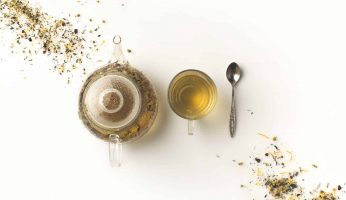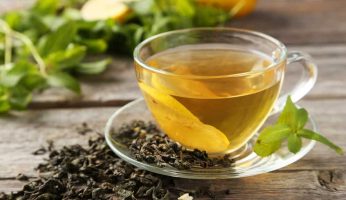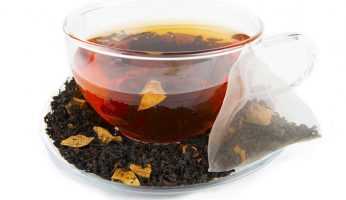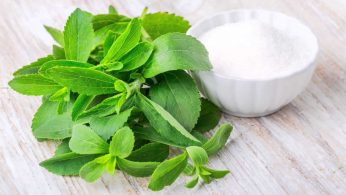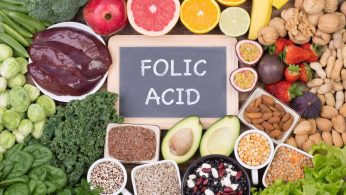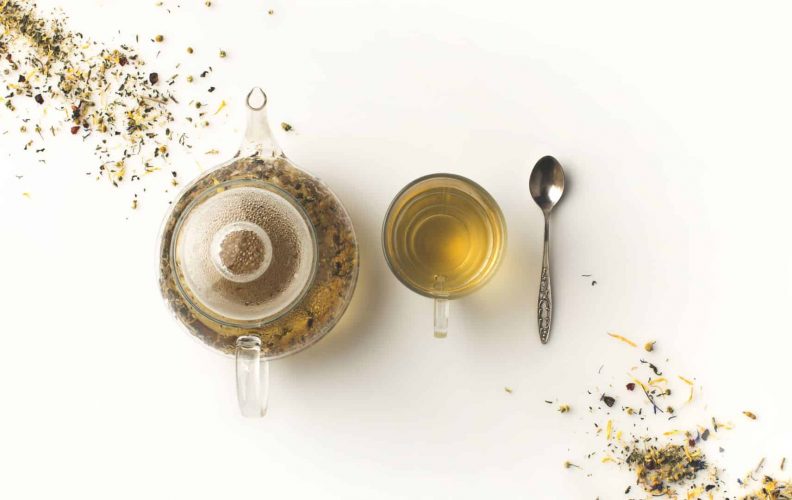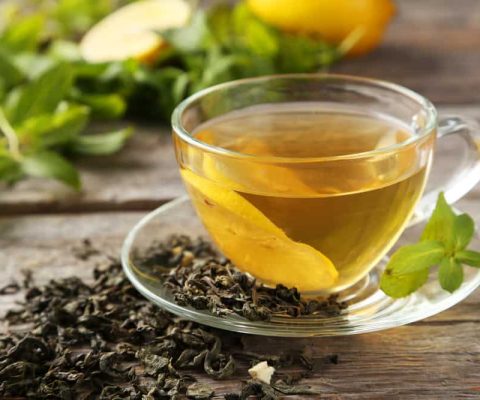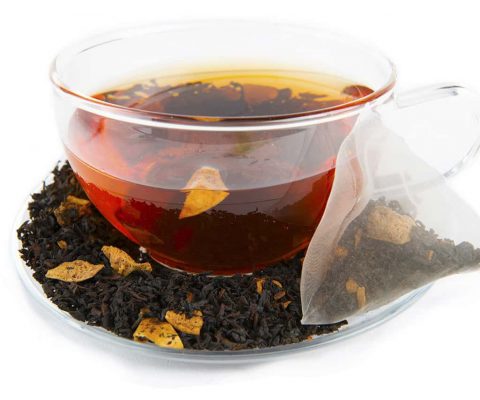Caffeine in Green Tea – Is It Beneficial to Your Health?
Disclosure: We use affiliate links and may receive a small commission on purchases.
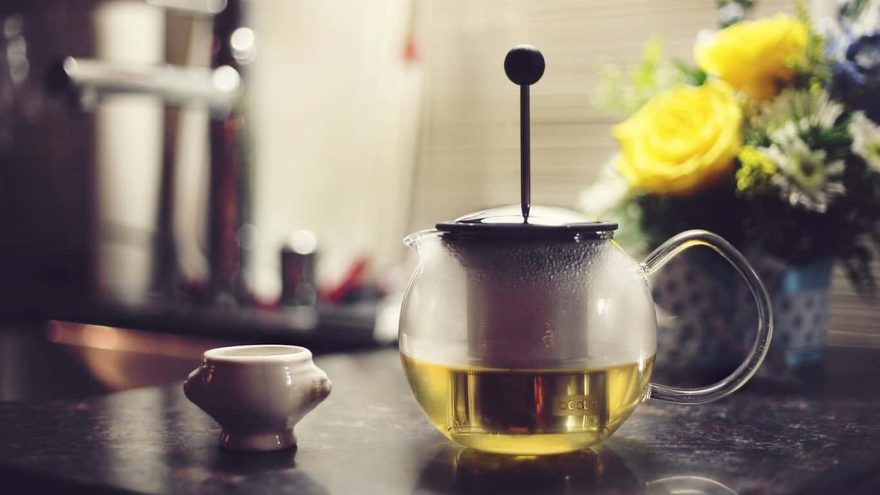 Caffeine in Green Tea – Is It Beneficial to Your Health?
thefitbay.com
Caffeine in Green Tea – Is It Beneficial to Your Health?
thefitbay.com
What is it about that fresh cup of tea in the morning that helps you wake up? Is it the gorgeous aroma? The ritual of relaxation?
While these factors may help you feel more alert, the real star of the show is caffeine. Many beverages contain caffeine, like black teas, white teas, coffee, and hot chocolate. Why does green tea’s caffeine content help it be one of the best beverages for your health?
Green tea is full of awesome antioxidants, polyphenols, and other naturally occurring compounds that may be good for your health. But what about the old favorite: caffeine? Will green tea help you focus and wake up in the morning?
Caffeine in Green Tea
Green tea is a light, airy drink brewed from tender leaves of the tea plant. These leaves are steamed or pan-fried, then rolled and dried. Once the leaves are prepared, it can be added straight to hot water or put into bags to be sold for mass consumption. It’s purported to have amazing health benefits, which include the stimulation of caffeine.
But how much caffeine in a cup of green tea is there?
Green tea caffeine content is much lower compared to other beverages and some types of tea. If you’re looking to increase your caffeine consumption from green tea, you may be out of luck.
Brewed green tea from a bag usually has, on average, 28 milligrams of caffeine per 8-ounce cup, which is less than many other beverages—as we will see later (1). This can change, though, depending on the type of green tea, how long you brew it, and also the quality of your tea leaves.
Caffeine can be great for cognitive functions (2), and it’s especially effective when combined with theanine (3). The caffeine in green tea binds to theanine, which is important because it has the most compared to other tea types (4). Theanine has been shown to relax areas of your brain, which can also help to mitigate the jitteriness commonly associated with caffeine drinks (5).
About Caffeine
Caffeine is a naturally occurring chemical found in many plants. It’s present in tea, coffee, and chocolate, among others. While it’s technically considered a drug, due to its ability to stimulate the body, a huge percentage of the world consumes it with regularity.
Coffee and tea are the second most popular beverages in the world after pure water, which means that the world’s caffeine consumption is high.
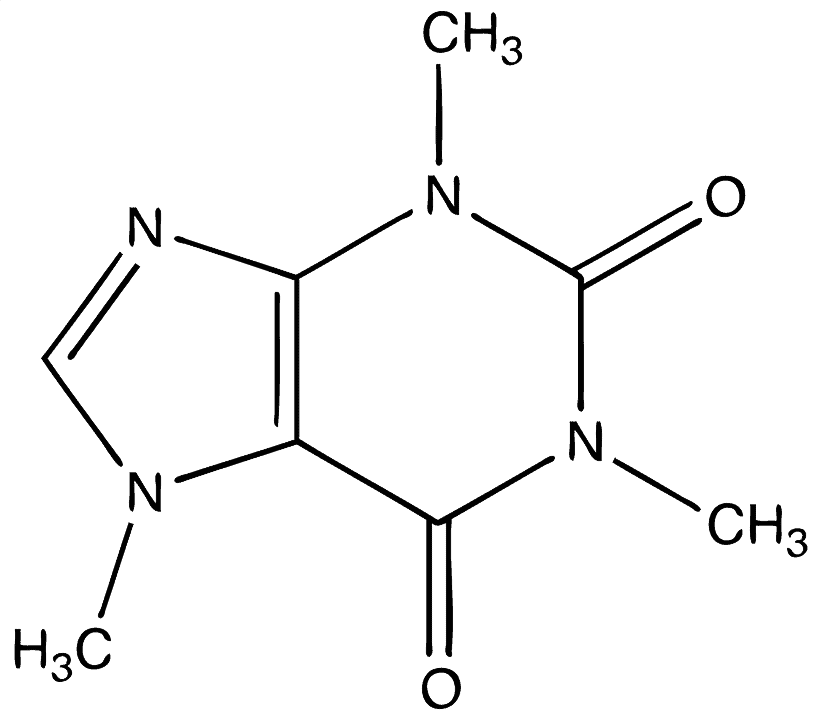
Caffeine works by absorption into all areas of the body: blood, plasma, muscle tissue, and more. Beverages that contain caffeine have almost immediate effects on your brain and body, as well as long term after-effects.
Short-Term Effects
One of the main reasons that people consume tea and caffeine, in general, is to feel alert. Caffeine affects the body by blocking adenosine receptors in the brain (6). When you are tired, your brain releases a chemical that binds with areas of the brain that tell you to feel sleepy.
Caffeine blocks your brain’s ability to read those chemical signals, so you don’t feel tired. In short, caffeine doesn’t ‘wake you up‘ by adding anything, but instead blocks your ability to feel fatigued.
Too much caffeine can overstimulate your body, however. Heart palpitations and jitteriness are common experiences in slight overdoses (7). Some people with sensitivity to caffeine may feel these effects after only one cup of tea per day, while it may take much more caffeine intake for others to experience side effects.
Long-Term Effects
There are both positive and negative effects in the long term consumption of caffeine. Plenty of studies show caffeine may help to reduce the risk of Parkinson’s and also certain cancers, while negative effects can include heart issues and risk of poor bone health (8).
Here are positive associations with long term use of caffeine (9):
- Lower risk of certain cancers.
- Weight loss.
- Improved liver function.
- Anti-inflammatory throughout the body.
- Low birth weight of babies to women who consume large amounts.
- Behavioral issues in young children.
- Restlessness.
- Heart palpitations.
- Muscle spasms.
Caffeine in Very Popular Green Tea Brands
If you’re determined to have the most or the least amount of caffeine, then it’s important to source your tea from a reputable brand. While loose teas can be some of the best tasting, they can vary significantly in their amount of caffeine.
Most popular brands of bagged tea are tested for the caffeine content, and they proudly display how much caffeine is in green tea on the box. Let’s look at some of the most popular brands and see how they compare.
Twinings
The Twinings brand is over 300 years old, dating back to the 1700s. With over 20 green tea blends to offer, they have almost any flavor you could care to enjoy. For a basic cup of pure green tea (with no fruit or extra favors), you can expect around 30-40mg of caffeine per 7 ounce cup.
Yogi Pure Green Tea
Yogi teas may have begun with herbal only blends, but their green tea has become famous due to its aromatics and taste. Because Yogi tried to source all of its green tea from organic sources, it does tend to have a bit more caffeine per cup than other varieties, 58mg per 8 ounce cup.
Matcha Organics
Matcha can have the highest levels of caffeine in green tea. This is because they make matcha with whole tea leaves. This means there’s more caffeine, but also more nutrients and vitamins. Matcha Organics brand can have over 70mg per teaspoon of dry powder! Of course, this is mixed into a full cup of tea, but if matcha is your favorite, make sure to adjust your consumption if you have a sensitivity to caffeine.
Tazo
These teas have become popular through the famous Starbucks green tea lattes that bear the Tazo leaves. While these beverages can contain extra caffeine (I know some people that add an espresso shot to a latte), a regular green tea brew can have between 31-45mg of caffeine per cup.
If you’re adding milk and sugar to the equation, remember you are also boosting the calorie content of the drink, whereas a normal cup of green tea has a negligible amount of calories.
Numi
Numi tea has a wide range of caffeine listed on their official website, between 15 and 70 milligrams. It may seem like a wide range, but this tea is wholly organic. Everything from the fertilizer used to water content can give you more or less, and even variation on the harvest can affect the caffeine amount.
The Republic of Teas
This brand has the most types of green tea available on our list (close to a hundred). There are flavored, infused, and in weight-loss versions to keep you on your toes. Each one is going to have a slightly different caffeine content, but their pure green tea will have approximately 30mg of caffeine per cup.
Lipton
When I was young, my Nana started every morning with black Lipton teas. According to her, adding sugar “ruined it,” and we learned to enjoy bitter brews while waiting for the school bus.
Later in life, I was introduced to the more subtle flavors of green tea and still honor my grandma by drinking her favorite brand. 45 mg per serving is about average, but since I brew a full pot at a time, it can be more.
Green Tea vs Other Teas
Black, white, green… all the rainbow of teas come from the same plant, the Camellia Sinensis (10). Varieties of tea are achieved by growing conditions, harvesting, and treatment. How much caffeine is in the final product can be affected by all of these conditions.
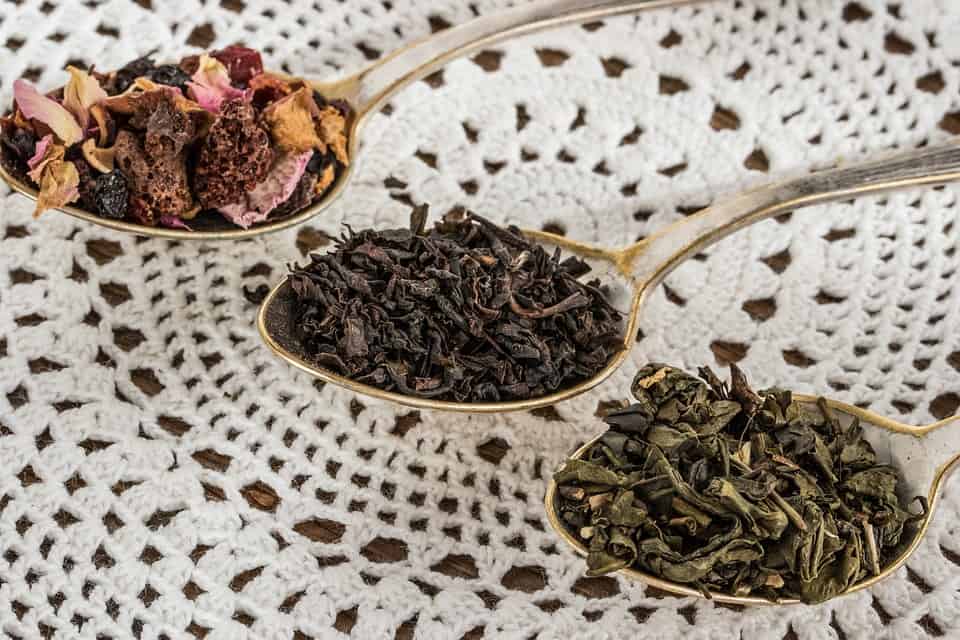
Black Tea
Green tea is generally picked from the topmost leaves of the tea bush. Workers then treat these leaves to stop oxidation, usually by steaming or pan-frying the leaves. This keeps the leaves bright green and helps to preserve the fresh flavor. Black teas, on the other hand, are allowed to oxidize fully, which is how they get their black and brown color.
Truly gorgeous, organic green teas are made from whole leaves and are rarely broken up. Black teas, on the other hand, are often crushed and rolled into smaller bits. Since the tea is processed, there’s more surface area available to the water when brewing. This allows for more caffeine to be released from the leaf. Loose leaf tea is also far less handled than bagged tea, which can also affect levels.
White Tea
Overall, green tea is far less processed than black tea, which results in lower caffeine levels (11). White tea, however, is made from newer leaves and is even less handled than green tea. Less caffeine is naturally present in white tea because of these factors.
While this may be a good thing for those who are sensitive to caffeine, you may end up losing some of the key health benefits of green tea varieties. Since white tea is made with newer buds, they have less time to mature, which means the levels of antioxidants and caffeine are lower (12).
Recap
Green tea falls in the middle of the spectrum of the three big teas. Black teas that contain caffeine are at much higher levels than green tea. White tea contains less caffeine per cup than green tea, but can also have less of the good stuff that’s associated with green tea.
Caffeine: Green Tea vs Coffee
While most teas are all made from the same plant, coffee is its own beast. Brewed from roasted beans of the coffee plant, it has a much darker and more acidic taste than green tea. A vast array of circumstances can change the overall caffeine content in a cup of coffee. More grinding of the coffee beans and more brewing time will change the amount of caffeine in coffee. Just like black tea’s processing exposes more surface area, so does the processing of coffee.
Caffeine content for a 6 oz cup of coffee ranged from 50 to 143 mg (13). That can be just as much as a cup of green tea or significantly higher, depending on how it’s brewed. If you get a cup of coffee from a coffee shop, you may be getting a higher level of caffeine since the beans are ground finer.
Another study cited that the average caffeine level in an 8-ounce cup of coffee is around 95 mg when brewed at home. This means that green tea has far less caffeine than coffee (14).
Factors Affecting Caffeine in Green Tea
The base caffeine content isn’t that different across teas when they’re treated the same (15). If the teas were all processed and drank in the same way, we could accurately calculate the caffeine per cup easily. But of course, not all teas are brewed equally, and this can affect how much caffeine is in green tea.
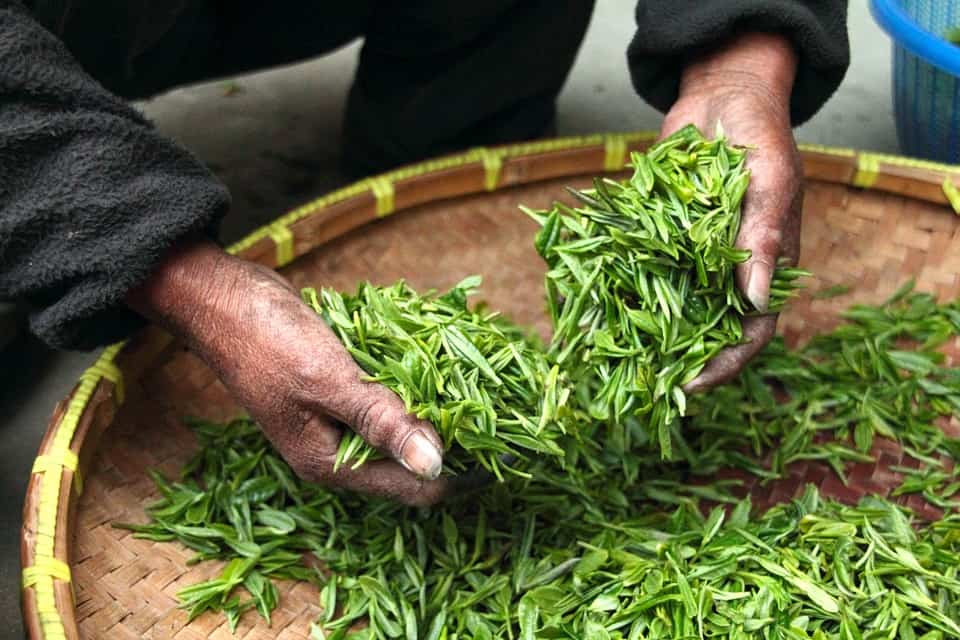
Quality of Tea
The first factor is the quality of tea. If you’re buying cheaper, bagged tea, you will most likely end up with more broken tea pieces, rather than full leaves. If you’ve ever opened up a bag of tea, it’s mostly dust and small chunks.
As tea leaves are broken down by steaming, rolling, and tearing, more of the natural oils come to the surface of the leaves. This allows more caffeine to leech out through osmosis as hot water is applied.
On the other hand, tea in a bag can reduce the amount of surface area that’s available. If you were to empty a bag straight into the water, then you may end up with far more caffeine.
Water Temperature
Speaking of water, the temperature of your brew can affect the caffeine content as well (16). Hotter water will yield more caffeine in your drink; however, green tea is ideally made with water that’s slightly lower than boiling (so as not to destroy the delicate, grassy flavor).
If you are looking to lower or raise the caffeine in your green tea, changing the temperature can affect it. Brewing with warm water, as opposed to boiling, for a longer amount of time can help you reduce how much caffeine you consume. Using boiling water can increase the amount of caffeine in your drinks, but still won’t raise the levels to compare tea vs coffee.
Double Dose
If you’re like me and use a teabag more than once, you might be getting a higher hit of caffeine in your second cup. You may have read that you can naturally decaffeinate tea at home by brewing once and tossing the tea, and then reusing the bag for second drinks. This supposedly ‘uses up’ all the caffeine and leaves you with a lower amount of caffeine.
Well, this is an old wives tale. Since the tea has been steeped once, it begins to release more nutrients (and caffeine) due to osmosis. A second brew on a tea bag is almost like adding WD-40; it just lets the good stuff slide right out, affecting the amount of caffeine (17).
Green tea has been proven to have even MORE caffeine per cup in the second infusion. Only black tea drinks showed lower levels, possibly because it’s already highly processed, and the caffeine can leech out at a faster rate in the first brew.
Recap
There are many factors that can affect the green tea caffeine levels in your cup. These are:
- Quality of tea leaves.
- Bags vs loose leaf.
- Water temperature.
- Length of brew time.
Decaffeinated Green Tea
If you’re worried about the caffeine levels in your morning green teas, there’s always the option to purchase decaffeinated green tea. The amount of caffeine is lowered either through heat or chemical reactions, leaving you with less caffeine. Like ‘alcohol-free beer,’ there are still low levels, and green teas can have 1-5mgs of caffeine per cup.
Studies have shown that the amount of caffeine in green tea isn’t as important when comparing fat loss between caffeinated and decaf green teas—so if you are drinking green tea with low caffeine levels for health reasons, you shouldn’t worry (18).
The downside is that they can reduce the naturally occurring antioxidants and flavonoids by removing caffeine. Many people rely on green tea for its health benefits outside of caffeine boosts. If it’s important that your green tea keeps you healthy, then brands that contain caffeine might be your best bet.
Summary
Green tea drinks can help you throughout your day. From caffeine intake to health benefits, green tea has been proven to improve your life.
So, does green tea have caffeine? Yes! Caffeine in green tea vs coffee is in much lower amounts, which might be a benefit to someone who needs to reduce their caffeine intake.
Studies show that you shouldn’t exceed more than 500 to 600 mg per day, which would be about 8-15 cups of green tea depending on the brand—as opposed to only 4-6 cups of coffee.
If you’re worried about your caffeine intake, while still wanting to gain the health properties of tea, then green tea may be your best choice.

